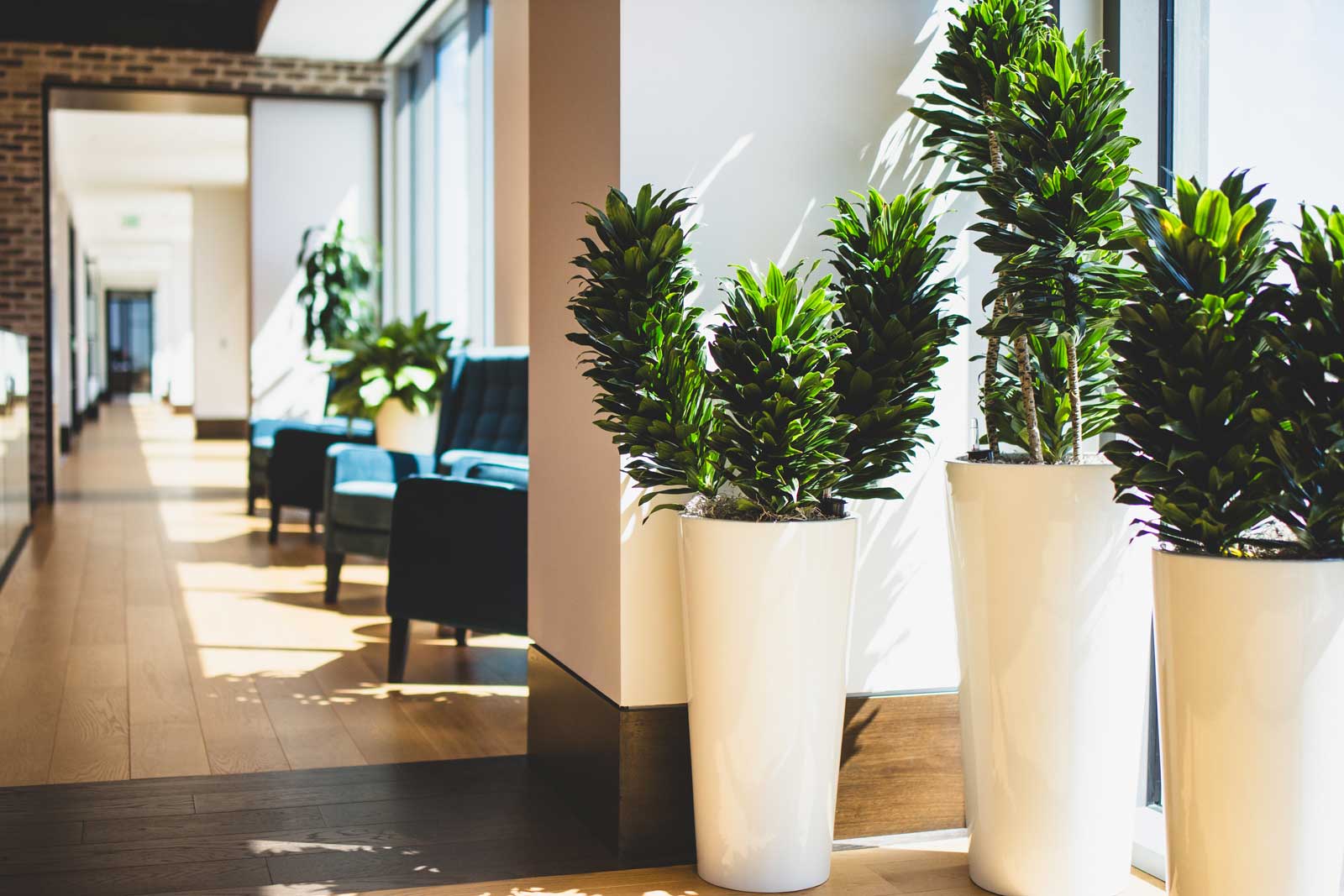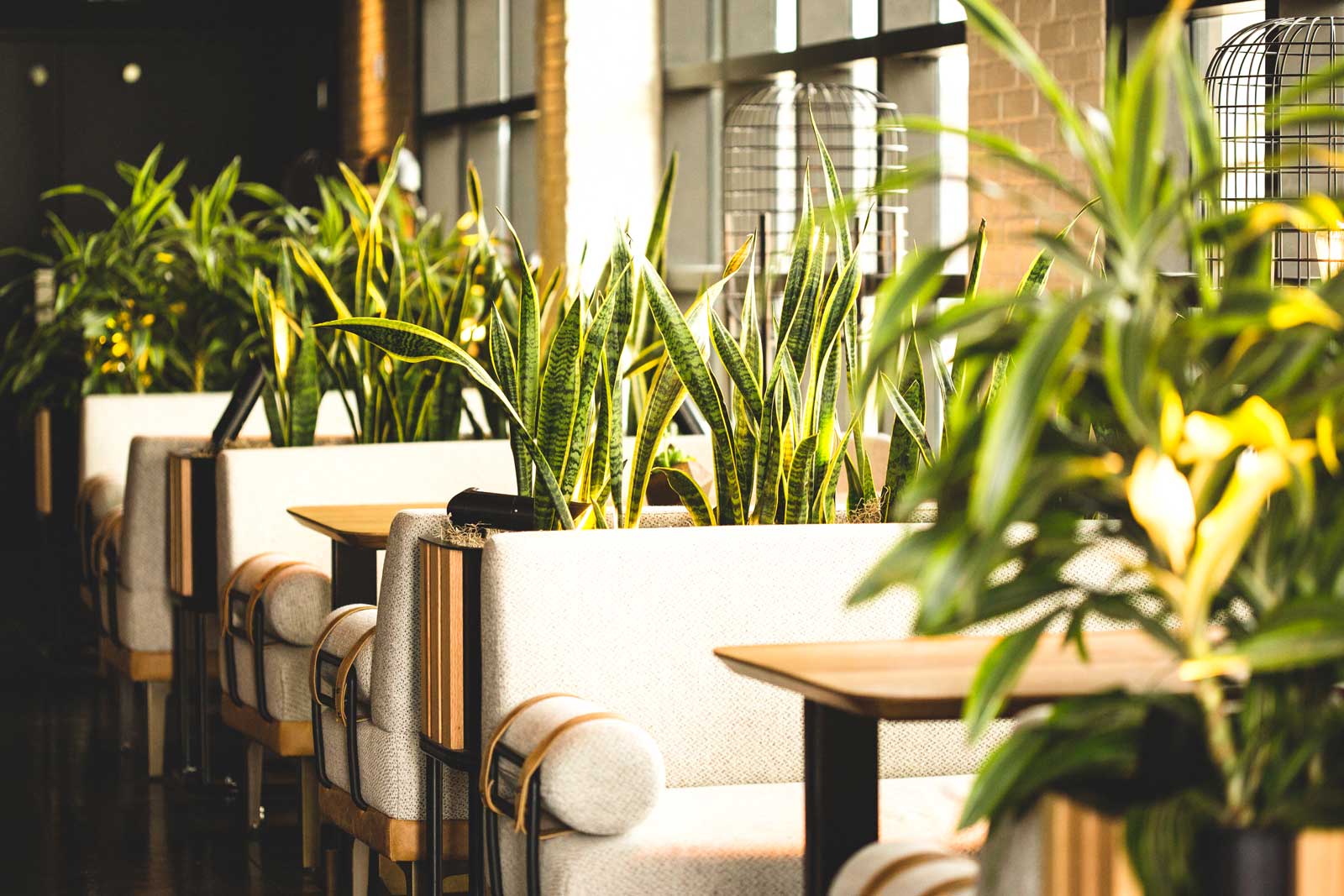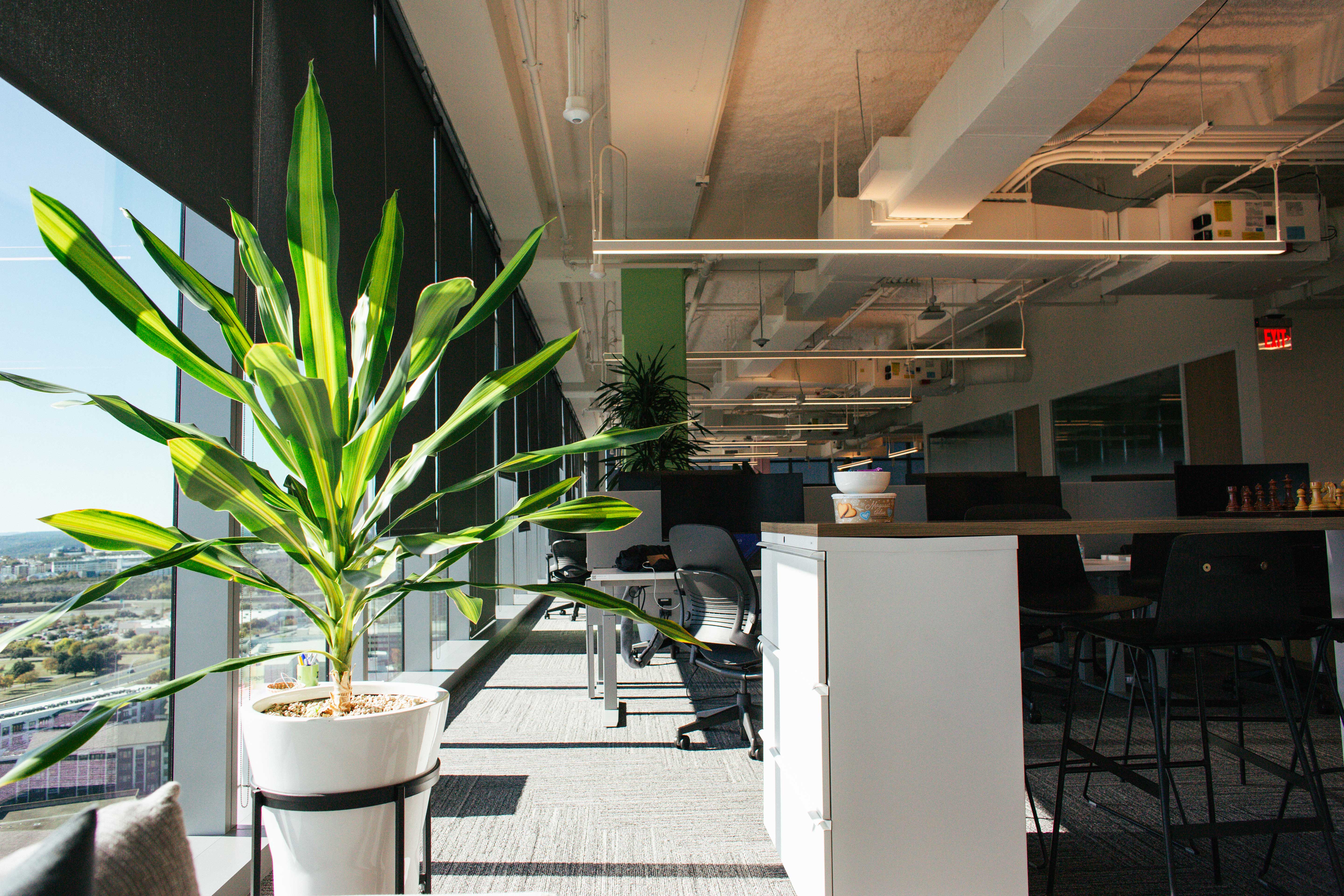Tips for Incorporating Seasonal Plant Life Into Architectural Design
To effectively integrate indoor plants into the built environment, architects and designers need to prioritize flexible design and adaptability in their work. They also need to consider certain key elements to embrace sustainable horticultural design that reflects each new season.
.jpg?width=740&height=493&name=Small%20Jefferson-Bank-Natura-Blog%20(1).jpg)
While integrating indoor plants and greenery has always been one of the easiest ways to enhance the visual appeal of a built environment, there’s also a growing pool of research confirming plants' ability to bring harmony and wellbeing to a space.
Because of these capabilities, incorporating plant life into a building’s design is a powerful tool for architects and designers. But, it’s important to consider the sustainability and year-round maintenance of indoor plants especially if you’re taking into account the look and feel of the changing seasons. With spring on our doorstep, there’s no better time to incorporate greenery and plant design into indoor spaces, like hotels, in a way that reflects the beauty of what’s happening outdoors.
Seize the Seasonal Opportunity
Architects’ and designers’ ability to spruce up an interior with inspiration from the changing seasons is especially beneficial for businesses in the hospitality industry. Many hotels hope to curate a fresh and visually appealing environment that also gives guests the feeling of a “home away from home”. Bringing a seasonal refresh to your hotel’s design can help do just that.
Those who create interior landscapes and plant designs for hotels are responsible for integrating live greenery into reception areas and communal spaces, like restaurants, pools, and lounges. As with all indoor plants, hotel plants promote tranquility and a sense of comfort among visitors, playing into humanities’ ’ innate desire to connect with nature. With the help of landscapers and similar plant design services, architects can use vertical living walls, and indoor plants to blend nature into a design.
Before this can happen, architects and designers need to think about the overall design of their spaces. To do so, they need to consider a few key best practices in biophilic design.
-
Maximize Natural Light
Natural light is crucial for plant health, which is why architects need to carefully consider where they place windows and other structures that create light. There has to be an adequate amount of light for indoor plants to thrive all year long.
With this in mind, consider incorporating large windows and light-bearing structures into your design. Use reflective surfaces that are light in color to maximize the light in an area. Your indoor plants will thank you! -
Consider Your Climate
Designers operating in hot and humid environments like East Texas, or Florida – should prioritize proper ventilation and opt for breathable materials, as well as an overall design that facilitates air circulation.
Climate considerations are also important when it comes to selecting and sourcing the types of indoor plants and greenery that you’ll bring into your hotel’s design. Choose plants that you know thrive in your climate, taking year-round temperature and humidity into consideration.
For seamless integration of plant life, opt for native plant species, which are both environmentally-friendly and sustainable. Gain valuable insight into which plant varieties thrive in specific climates and conditions by consulting with our horticultural experts.
-
Take Maintenance into Account
When selecting and sourcing spring plant life for public spaces, like hotels, architects should consider the maintenance requirements of certain hotel plants and greenery, in addition to aesthetic visions. Does your greenery need constant upkeep? Will your indoor plants survive the heat of summer? How about an air-conditioned environment? Can they withstand the stress of a high-traffic space?
As spring approaches, think about incorporating seasonal indoor plants into your design. In Florida, for instance, plants that flourish in humid, warmer weather, like ferns and orchids, will thrive. Other plants that do well in warm and humid weather are:
-
Spider plants, which prosper in indirect sunlight and have positive air-purifying qualities.

-
Peace lilies, which are also able to tolerate low-light conditions and assist with improving the indoor air quality.
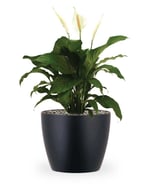
-
Pothos, a resilient, low-maintenance potted plant that tolerates a variety of lighting conditions.
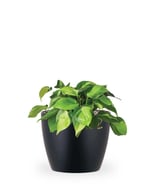
-
-
Collaborate With Experts
Because plants thrive in their native environment, it’s a good idea to select and source spring plant life with the help of experts who know which hotel plants thrive in which environments.
As industry leaders in indoor plant design, Natura will help you make your green wall a success, and avoid common mistakes so that your hotel plants can thrive.
Natura helps over 4000 commercial spaces integrate plant life into their built environments. We’ve seen first-hand how plants impact the way we live, work and play, by creating significant improvements in human behavior, employee morale, client engagement and overall improving the business’ wellbeing.
Just because your workspace is a place of business, doesn’t mean it should be uninviting or uninspiring. We believe that indoor plant design uplifts and inspires your employees, tenants, and customers, so we want to help you leverage the power of plants to improve the look and feel of your business environment.
Natura can help you transform your workspace with biophilic design, making it more enjoyable for employees to work there, and customers to be there. But, if you’re still unsure of how indoor plants can impact the mood and ambience of a space, read our blog for a detailed case study on how integrating hotel plants and biophilic plant design transformed the DoubleTree Hilton Hotel in San Antonio .
-
Change Things Up
To refresh a space as the seasons change, interior architects and designers can swap out seasonal plants or move existing plants to different areas in the room or space. This ensures that your indoor plants remains dynamic and visually engaging all year long.
It's become commonplace for hotels and other businesses to incorporate themed décor that reflects holidays, like Easter, Fourth of July, Hanukkah, Christmas, and New Year’s. It’s a fun and festive way to boost the mood of guests and employees. However, introducing season-specific plant life and coordinating seasonal color with your décor can have a similar effect. Spring colors and tones are especially warm and inviting, with the ability to create a lively and uplifting ambience in your space ahead of the warm summer months. They can also help hotels and businesses in the hospitality industry keep up with seasonal design trends
Create Lively, Uplifting Spaces
Because of their power to transform spaces into vibrant and refreshing environments that increase the overall aesthetic appeal of a space, integrating hotel plants into architectural design has become more than just a must have for hotels and other hospitality businesses.
When you take the seasons into account, you can prevent a space from stagnating and falling behind on trends, which will ensure that your hotel or business space stays ahead of competitors throughout the year.
Experience the transformative power of spring plant life in architectural designs. Schedule a consultation today to enhance your space and well-being.


